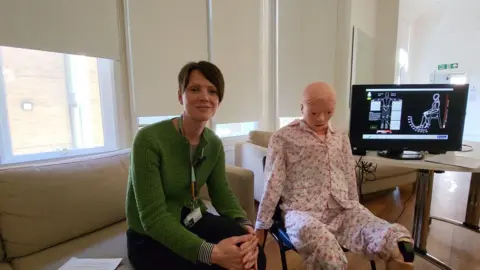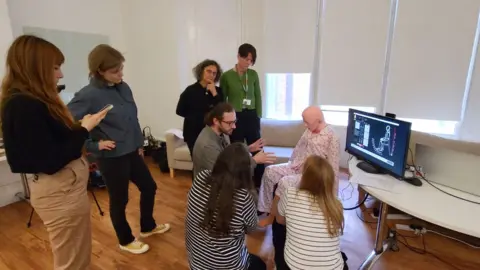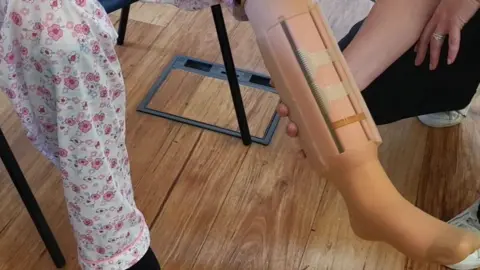Robot used in occupational therapy touch study
 Oxfordshire County Council
Oxfordshire County CouncilA team of occupational therapists has been using a robot to help research the impact of touch on clients.
Oxfordshire County Council recently started using a robot called Mona as a training tool during physical and seated assessments.
The aim is to offer a greater understanding about the way different people experience being touched and manoeuvred.
The council said that the robot could recoil and mimic a sound expressing pain, resembling a wince, if moved too firmly.
The study is being carried out with the Oxford Robotics Institute (ORI) and University College London (UCL).
The robots in the programme, called Embodied Intelligence, have been programmed to take on different human characteristics and health concerns, such as arthritis and dementia.
Occupational therapists make initial assessments about a person's physical and cognitive challenges and can also recommend improvements within their homes.
 Oxfordshire County Council
Oxfordshire County CouncilTim Bearder, cabinet member for adult social care, said the technology gave them "greater confidence in how they carry out their vital work".
Mona has physical resistance if she is moved too firmly, and legs that allow for assessing movements at the knee joints, as well as at the hip.
"If we have a client who is non-verbal, there is a lot going on in bodily communication in terms of tension and expressions of pain," said USL researcher Dr Minna Nygren.
"That would be a cue for [the therapists] to shift their way of touching.
"These small nuances can all make a difference to the client-therapist relationship which is ultimately really important for the treatment's outcome."
Occupational therapist Ruth Alecock said the care team "feel extremely privileged" and "hugely excited" to work with the researchers.
"We develop that important rapport when we meet somebody," she said.
"But as well as touch being calming and reassuring for some people, it could also be irritating, agitating and invasive for someone's personal space.
"This project has enabled me to really reflect on that and get more of an insight what that person is feeling that we are assessing."
 Oxfordshire County Council
Oxfordshire County CouncilYou can follow BBC Oxfordshire on Facebook, X (Twitter), or Instagram.
